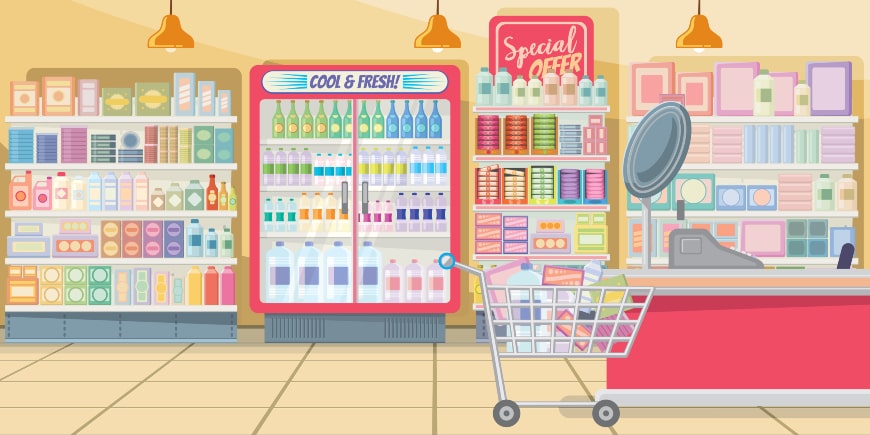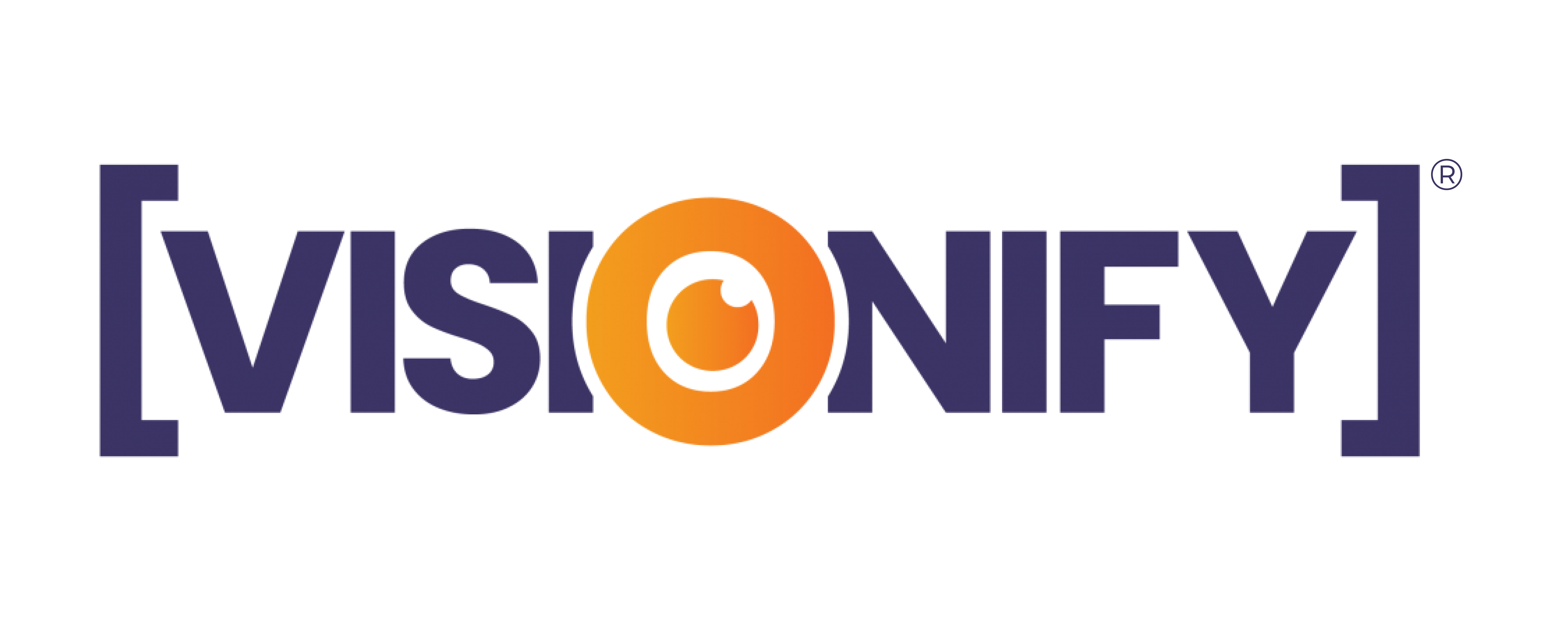
With the onset of the COVID-19 situation, the retail world is completely changing. The marketers are trying to take the help of the latest and advanced forms of technology to change how they conduct their business. Multiple companies and organizations are trying to innovate and transform their omnichannel approach to enhance the customer experience. This will help them recover from the damage caused to them because of the pandemic situation. So, let us look at how companies utilize computer vision technology to make the most out of the present case.
What is computer vision?
Computer vision is nothing but a segment of artificial intelligence. The main aim of computer vision is to configure computers to understand and interpret the various aspects of the virtual world. Using computer vision, the digital images from cameras and videos can be used by machines to identify and classify multiple objects. The machines can then give the required reactions to what they have seen. Retailers can use this information to obtain insightful data about their business.
Computer vision works on a highly advanced algorithm where the images and videos from users’ smartphones and shop cameras are used to input the algorithm. The machines will identify people, objects, and products and provide the required output based on the input. The image will be appropriately analyzed, and demographics will be generated. This will allow business owners to run their businesses more strategically. This will also bring an end to all kinds of fraudulent activity. The main focus of computer vision is to automate various retail market processes to reduce human labor.
How is computer vision spreading in the retail world?
The involvement of computer vision in the retail world is expected to overgrow by 2025. With time, the retail industry will be entirely dependent on computer vision. According to various researches, about 3% of retailers have implemented computer vision technology in their business. However, within the next two years, over 40% of the retailers will be involved in this technology. This is extremely important to the retailers because the companies and retail stores do not get accustomed to the latest forms of technology currently trending in the market. Therefore, they will never be able to get the best business outcomes. In this way, computer vision has completely changed how the retail industry works. This has helped to save a lot of manual effort. Also, computer vision has made the retail market industry a lot more systematic and organized.
How do business owners use computer vision to grow their business
Popular use cases of computer vision in the retail industry
Here, we are going to discourse some of the most prominent Computer Vision Use Cases in the Retail Industry:
- Contextual Information: Often, you may face a lot of difficulties understanding how exactly you are going to use a particular product. In such cases, most customers avoid purchasing such products. Retailers can take care of this issue by taking the help of computer vision-based websites or applications. This computer vision-based application will quickly recognize the product that the retail owners offer to the customers. It will then provide the related contextual information to the customers. The contextual information may include public review, company history, usage guidelines, and many more. Based on this information and details, the customer will decide whether they would want to purchase that product or not.
- Facial Recognition: Almost every store has installed web cameras for security purposes, and retailers can use these cameras for computer vision as well. These cameras can recognize the customers and also identify their purchases. The retailers can then use that information to identify the buying pattern of the customers. They will also be able to keep the customers updated about the various discounts currently being offered at their retail store. This will help companies to increase their brand loyalty. They will also be able to drive a lot of customers towards their stores. In this way, retailers can take the help of facial recognition technology in attracting new customers to their brand. Facial recognition will also provide the customers with a unique shopping experience. This will also help the shop owners to understand the needs of the customers and design their business strategies accordingly.
- Employee Performance: Retailers can also utilize computer vision to track the performance of the employees. You will be able to continuously evaluate how your employees are working by monitoring their day-to-day work. Computer vision can also be used as a tool for emotion identification. This can help retailers to understand how happy the customers are after they have interacted with the employee. Self-evaluation processes can help retailers to find out ways by which they can improve their business activities. Retailers can also provide training to the employees to enhance their performance and deal with the customers in a better way.
- Customer Data: Computer vision can also collect customer data and draw various insights from it. Using facial recognition technology, you will be able to identify the customer demographics. You will also get a good idea about the purchase patterns of your regular customers. This will help you to identify the products that are in high demand. You will also be able to design a proper marketing strategy for business. By taking the help of these customers’ data, you will also be able to find out how you can place your products in a convenient location at your store to fall to the customers’ attention.
- Automated and Cashier-Less Payment: Multiple stores are taking the help of computer vision to automate their payment method. These stores carry the support of computer vision to view the products purchased by the customers. These products can then be registered in the store’s mobile application, and payments can be immediately processed automatically. In this way, the retailer can simplify the payment process. Using the solutions, the customers will no longer have to stand in long queues during the checkout process. This will also allow the retailers to make better use of their workforce.
- Theft Prevention: Employee theft and shoplifting can cause considerable losses to retailers on an annual basis. To prevent such activities, retailers are deploying cameras at various locations of their stores so that the employees’ actions and the customers can be monitored regularly. However, scanning everything in a busy store can be a challenging task. Using a computer vision system, you will be able to watch all kinds of suspicious activity. As soon as the system identifies any suspicious activities, it will immediately generate alerts. This will make the security staff aware of the fact that something fishy is going on in the store. They can immediately take the required action and save the store from potential damage. In this way, computer vision improves the security mechanism of the company.
- Stock Availability and Shelf Management: Computer vision can also be used in inventory management. Using videos and cameras, retailers can obtain information about the shelf in a real-time environment. The cameras will automatically detect whenever a shelf is empty. They can then send the required alert to the manager so that the shelves can be restocked immediately. In this way, computer vision will ensure that none of the shelves is empty at any time. Computer vision will also help retailers to keep themselves above their competitors and increase their revenue. The cameras can also be used to recognize how many products can be placed in a particular store. This will also help retailers to arrange the shelves in a better way.
- Merchandising and Advertising: Computer vision can also be used for in-store merchandising and advertising. Using computer vision, you will find out when exactly a customer has entered the store. The computer vision systems can then observe the shopping patterns of the customers and collect data from them. The available data can be used to offer discount coupons to customers. Retailers can also use this data to send messages to the customers regarding when a particular product is on sale. They can also keep the customers updated about the availability of the products that the customers purchase from the store regularly.
- Store Visitor Analytics: Retailers use computer vision in retail solutions to assess the overall effectiveness of store layout, store traffic, and even the performance of individual store departments. By tracking in-store behavioral patterns, retailers can make strategic adjustments that can boost sales. Tying demographic data to customer behavior patterns allows retailers to understand which factors affect visitor engagement. For example, a retailer with multiple locations may want to know if age or income level affects customer engagement or buying habits. Using computer vision solutions enables retailers to measure these key factors with accuracy and speed.
Some departing thoughts:
In this way, computer vision has modified various aspects of the retail industry, and with time, the change will become a lot more prevalent. So, if you are a retailer, it is high time that you start including computer vision systems in your business. It will allow you to save a lot of time and money and will enable you to streamline your business operations.

